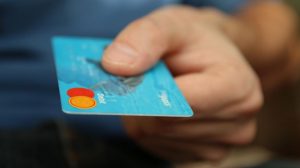One of the difficulties that you may face at the initial stages of the design process is defining the requirements for the future product. If you incorrectly define needs and goals and then generate ideas on how to achieve these false objectives, then the final result will definitely differ from your (and users’) expectations.
As it is said in Eleken’s article “initial requirements gathering is a preliminary phase of the design process that is crucial to setting the whole project off in the right direction by focusing on the right problems to solve and, consequently, building the right thing”.
Sounds important, right? And it is! That’s why in this article we are going to help you understand how to approach capturing UX design requirements correctly.
Steps of gathering UX requirements
The process of identifying user experience requirements can vary from project to project. Still, below we will state and discuss three main stages you should definitely know about.
Collecting data, defining goals and needs
Before proceeding directly to the design of the product interface, the designer collects data. Without this step, it is impossible to understand what needs to be obtained at the output.
- First, you need to get business requirements from the client. Only they understand what goals need to be achieved. If the client can’t clearly state what they need, then you have to help them. For this, your task is to thoroughly interview the client, that is, to “get into the brain” and get all the necessary information. Very often, in order to understand what the client wants, you need to understand their business processes and understand how they make money.
Example of the business requirements document. Image credit: rfp360.com
- The next step is to understand who will use the product, what problems they have in this area, what goals they want to achieve, and what needs the product will have to satisfy. As a rule, this data is presented in the form of user personas. This method of analyzing and presenting information is quite convenient because it allows you to better focus on the goals of users.
User personas example. Image credit: eleken.co
Generating ideas and forming requirements
The next step is to collect all the goals and needs, analyze them and find ways to satisfy those needs.
For this purpose, you may use brainstorming (or other ways of generating ideas) with the participation of the entire team. To make this process even more fun, you can involve the client in this process.
For writing down ideas and sorting them out, you can use software like Miro, Asana, or find some online templates for brainstorming.
Example of brainstorming with the help of Asana. Image credit: cloudfront.net
It is convenient to work with such a format for presenting information, supplement it, structure, and so on.
Here are some sequence of actions you can take to generate ideas:
- First of all, write out the goals and needs of the user.
- Then turn off critical thinking and generate ideas on how to satisfy the needs of future users. You need to write down all the ideas in a row, and the more the better. The main thing in this step is to have fun, it helps to relax the brain and give free rein to your imagination. You can also create mind maps to simplify the process of generating ideas. The benefit of visualizing brainstorming ideas is that you always have them in front of you.
- The next step is crucial: you need to focus on goals and needs, determine their significance, find and select ideas that will solve the user’s problems, assess the importance for users, and prioritize them.
Based on this information, it’s time to make up the final list of requirements for the future product.
Creating a document with requirements
The final step is to gather all the information and insights that you’ve learned during research in one place. You need to create a document that describes the goals and needs with selected scenarios.
In order to form a list of requirements that will not contain unnecessary data, the requirements must be formed according to three criteria:
1. They should be consistent with the goals of the project.
2. You should understand that it is possible to fulfill all the stated requirements.
3. They should not conflict with each other.
It is very important that the client study and approve this document because clients indicate the direction of further work.
I would also like to emphasize that we form a list of requirements based on the data available at the time of research. After development, testing the product, and analyzing the data obtained, this list may change, or become completely irrelevant, and this is a natural workflow.
The result
After completing capturing the user experience requirements, the team gains a detailed understanding of the problem, designers realize what results are best to strive for, and where to focus their efforts.
As well, this process promotes generating top ideas for design solutions that can be promoted and tested in the future. In some cases, gathering UX requirements can lead to the abandonment of some pieces of work, since, for example, there is no demand among consumers.
What’s next?
After the list of requirements is written and approved, make sure each team member has constant access to it. Then you can write more detailed user scripts, if necessary, or go directly to prototyping the interface of the future product.
As the old saying goes, a good beginning makes a good ending. Taking care of capturing UX requirements with help of UI UX design firm at the initial stages will lead you to a useful and valuable product at the outcome.





















